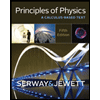The temperature C of a fresh cup of coffee t minutes after it is poured is given by C = 125e−0.03t + 67 degrees Fahrenheit. (a) Make a graph of C versus t. I answered ( a) correctly (b) The coffee is cool enough to drink when its temperature is 145 degrees. When will the coffee be cool enough to drink? (Round your answer to two decimal places.) min (c) What is the temperature of the coffee in the pot? (Note: We are assuming that the coffee pot is being kept hot and is the same temperature as the cup of coffee when it was poured. Round your answer to the nearest degree.) °F (d) What is the temperature in the room where you are drinking the coffee? (Hint: If the coffee is left to cool a long time, it will reach room temperature. Round your answer to the nearest degree.) °F
Energy transfer
The flow of energy from one region to another region is referred to as energy transfer. Since energy is quantitative; it must be transferred to a body or a material to work or to heat the system.
Molar Specific Heat
Heat capacity is the amount of heat energy absorbed or released by a chemical substance per the change in temperature of that substance. The change in heat is also called enthalpy. The SI unit of heat capacity is Joules per Kelvin, which is (J K-1)
Thermal Properties of Matter
Thermal energy is described as one of the form of heat energy which flows from one body of higher temperature to the other with the lower temperature when these two bodies are placed in contact to each other. Heat is described as the form of energy which is transferred between the two systems or in between the systems and their surrounding by the virtue of difference in temperature. Calorimetry is that branch of science which helps in measuring the changes which are taking place in the heat energy of a given body.
The temperature C of a fresh cup of coffee t minutes after it is poured is given by
min
(c) What is the temperature of the coffee in the pot? (Note: We are assuming that the coffee pot is being kept hot and is the same temperature as the cup of coffee when it was poured. Round your answer to the nearest degree.)
°F
(d) What is the temperature in the room where you are drinking the coffee? (Hint: If the coffee is left to cool a long time, it will reach room temperature. Round your answer to the nearest degree.)
°F
Trending now
This is a popular solution!
Step by step
Solved in 3 steps with 3 images

Compound X and compound Y are constitutional isomers with the molecular formula C5H10. Compound X possesses a carbon-carbon double bond in the trans configuration, while compound Y possesses a carbon-carbon double bond that is not stereoisomeric:

